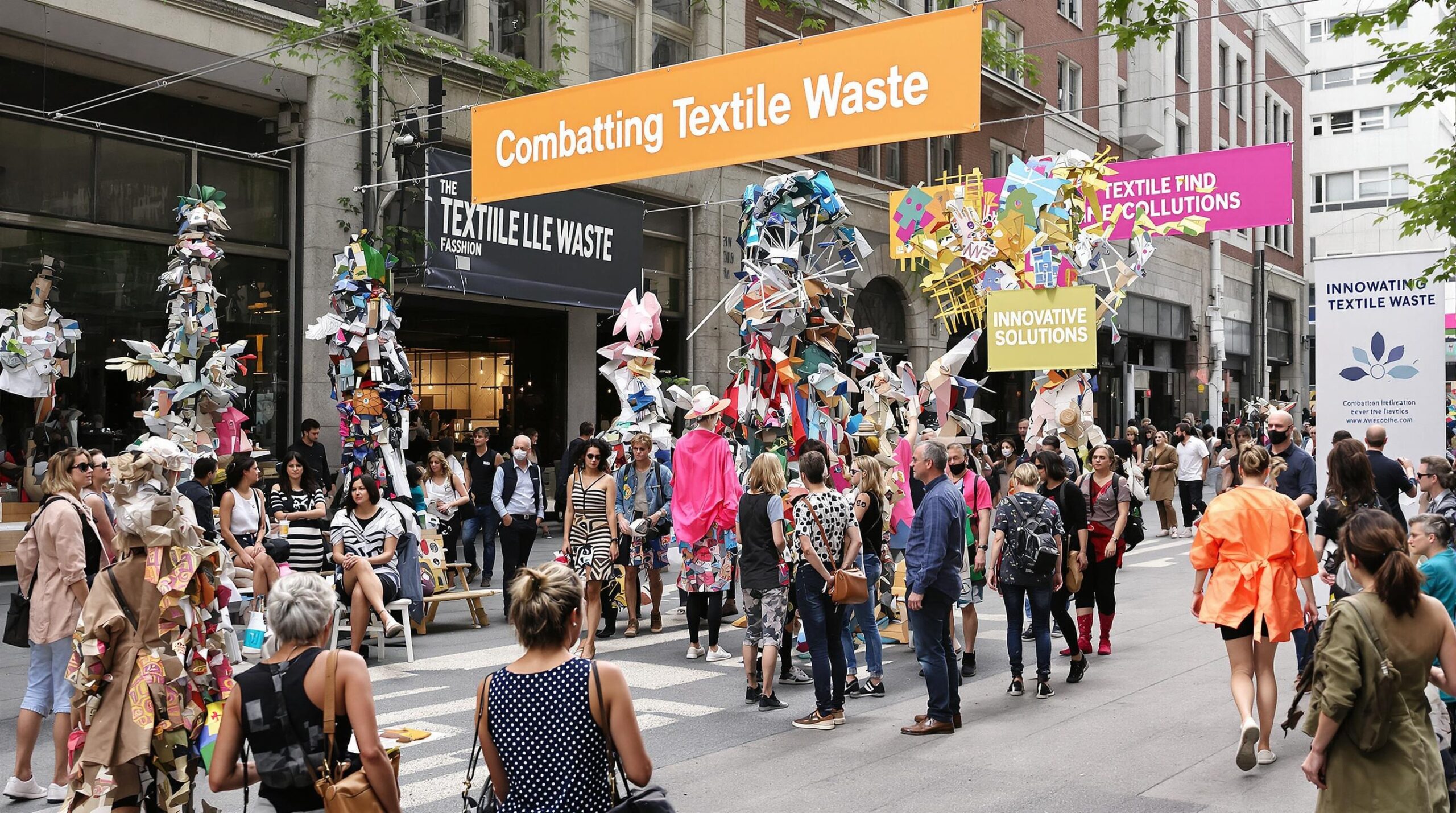Textile waste has become a significant environmental challenge within the fashion industry. Discarded clothing fills landfills while synthetic fibers take centuries to degrade. Sustainable fashion offers opportunities to address this waste problem through inventive solutions. Brands, researchers, and consumers are reshaping systems to create lasting change in how clothing is made, used, and disposed of.
Understanding the Scope of Textile Waste
Every year, millions of tons of clothing are thrown away worldwide. Most garments end up in landfills or are incinerated. Fast fashion contributes to the problem by producing inexpensive, short-lived clothing in massive quantities. Consumers tend to buy more and discard items faster. Synthetic fabrics like polyester are especially concerning because they do not break down easily, leaving a lasting environmental footprint.
Circular Fashion: Closing the Loop
Circular fashion aims to keep materials in use for as long as possible. Brands are designing clothing with longevity, repairability, and recyclability in mind. For example, some companies use mono-material fabrics and replace complex blends to ensure easier recycling. Brands like Stella McCartney and Eileen Fisher invest in take-back programs that collect old garments and turn them into new products. These initiatives help reduce textile waste by extending product life and promoting responsible disposal.
Repair and Upcycling Initiatives
Repair services have resurged, helping consumers extend the life of their garments. Some brands offer free mending or replacement parts for their products. Upcycling has grown popular as designers transform discarded clothing into new, unique pieces. Organizations run workshops and online tutorials to teach sewing, patching, and creative alteration. This hands-on approach not only reduces waste but also fosters a deeper emotional attachment to clothing.
Rental and Resale Platforms
Rental and resale services are transforming sustainable fashion consumption. Fashion rental platforms let users borrow clothing for special occasions or everyday wear. This slows demand for new garments and maximizes the use of each item. Resale networks, both online and offline, allow people to purchase high-quality, pre-owned fashion at lower prices. Programs like Depop, The RealReal, and ThredUP have popularized secondhand shopping and given garments longer lives.
Textile Recycling Technologies
Modern textile recycling techniques promise to transform waste back into usable materials. Mechanical recycling turns cotton, wool, and other natural fibers into new yarns through shredding and re-spinning. However, quality degrades after several cycles. Chemical recycling technologies offer bigger breakthroughs by breaking down fibers at the molecular level. This enables recovery of high-quality materials even from blended or synthetic fabrics, which were once considered unrecyclable.
Innovations in Fiber Regeneration
Several startups are pioneering advanced recycling methods. Companies like Renewcell and Infinited Fiber have developed systems to regenerate cotton textile waste into pulp that can be re-spun into high-quality fibers. Their processes require less water and energy than traditional manufacturing, reducing environmental burden. These recycled fibers have started appearing in partnership collections with major apparel brands, marking a significant shift toward circular fashion on a larger scale.
Synthetic Fiber Recycling
Polyester and nylon present unique challenges since they are made from petroleum-based plastics. Modern chemical recycling can depolymerize these materials, separating them back into raw chemical building blocks. The resulting fibers are nearly identical in strength and appearance to new ones. Brands like Adidas have introduced footwear containing recycled polyester sourced from ocean plastic and old garments, proving scalable solutions are possible. This approach helps tackle both plastic pollution and textile waste simultaneously.
New Materials for Sustainable Fashion
Material science is playing a vital role in combating textile waste. Fashion innovators are creating fabrics that biodegrade faster or are easier to recycle. Innovations include plant-based leathers from pineapple, mushrooms, or apple peels. As demand for animal-free and petroleum-free alternatives rises, manufacturers scale up these products to make them affordable and accessible. Such alternatives offer similar qualities to traditional materials but leave a smaller environmental footprint.
Regenerative and Compostable Textiles
Some fashion brands now offer clothing made with regenerative fibers like hemp and linen. These plants improve soil health and require minimal synthetic inputs. Compostable textiles made from Tencel, banana fiber, or bio-based synthetics lose their harmful legacy after use. When properly disposed of, they break down into organic matter rather than contributing to landfill buildup. By supporting regenerative agriculture, the fashion industry moves further away from linear, waste-producing models.
Policy and Consumer Behavior Changes
Innovative solutions often require backing from policy and shifts in consumer mindsets. Governments are starting to legislate for producer responsibility, requiring brands to manage garments’ end-of-life impacts. Tax incentives for recycling, bans on landfilling textiles, and transparency mandates are being debated and enacted. Educational campaigns encourage consumers to buy less, choose quality, and care for their clothing responsibly. Community swap events and clothing libraries encourage sharing over hoarding, making sustainable fashion more inclusive.
Collaboration and the Future of Sustainable Fashion
Progress will accelerate when brands, governments, innovators, and individuals work together. Global initiatives like the Ellen MacArthur Foundation’s Make Fashion Circular bring diverse stakeholders together to scale new solutions. Investment in research, development, and infrastructure will make recycling and sustainable materials more accessible everywhere. Data-driven design and transparent supply chains promise to align environmental goals with business strategies. The collective drive for innovation signals that textile waste, once seen as inevitable, can be decisively reduced.
Conclusion: A Sustainable Wardrobe Starts With Every Choice
Sustainable fashion’s success requires a holistic approach to combating textile waste. From material innovation and recycling technologies to policy changes and new consumption models, the positive impact is growing. When consumers support sustainably produced clothes, care for possessions, and recycle correctly, they help break fashion’s destructive cycle. As solutions evolve and collaboration spreads, there is real hope that future wardrobes will celebrate creativity and responsibility in equal measure, leaving textile waste behind.

